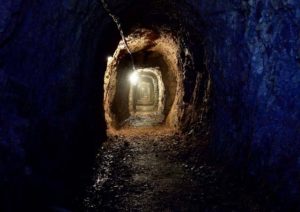by Winnweiler Tourist Office 
In the Palatinate, the mining tradition is very old, because a wide variety of natural resources was found in this region. In some areas, there is even evidence of mining activities dating back to the time of the Celts.
The small town of Imsbach, located in the foothills of the Donnersberg hill, used to be a mining town. Even today, visitors can see traces of early mining activities and travel back through time by exploring the two mines “Weisse Grube,” White Pit, and “Grube Maria,” Maria’s Pit.
The Historic Museum of Mining in the Palatinate includes not only an extensive collection of beautiful minerals but also other natural resources that were found in the area.
Besides these exhibitions, events and regular guided tours, the Mining World of Imsbach, will offer guided tours in English.
Officials hope to accommodate American community members with these special tours through the “Grube Maria,” which will be offered 11 a.m. to 5 p.m. Sept. 15.
Tickets are four euro for adults and two euro for children and include the guided tour as well as admittance to the Mining Museum. Reservations are not required.
In the Palatinate Mining Museum, visitors are not only amazed by a glittering mineral world, but also by the diversity of the region’s natural resources.
This year’s season will close the end of October. Opening hours are 1 p.m. to 5 p.m. on Saturdays and 11 a.m. to 5 p.m. on Sundays and German holidays, with regular guided tours in German. Groups of at least 15 can make reservations for guided tours during weekdays.
Also tomorrow and Sunday, interested visitors can visit the well-known mineral- and fossils fair also taking place in Imsbach.
For more information, call the Winnweiler Tourist Information Office at 06302-602-61, email info@winnweiler-vg.de, or visit www.bew-imsbach.de.


